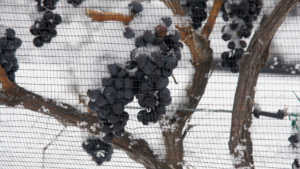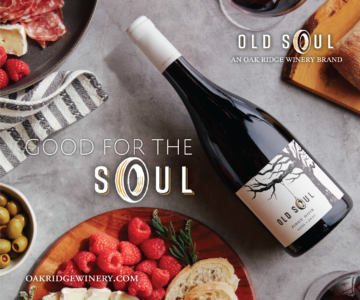Icewine: Some of the most extreme wine produced in the world
story by Kelly Magyarics
Randy Dufour recalls the time an Indonesian wine importer came to rural Ontario, Canada hell-bent on picking grapes for Icewine yet showed up dressed completely unprepared. After five minutes in negative temperatures in the middle of a Canadian winter night his hands were shivering; after ten minutes, they were rendered virtually inoperable.
Prior to this brumal experience, the Indonesian importer had complained to Dufour that Icewine, which is sold in 375ml bottles often upwards of $50, was overpriced. Dufour—Vice President of Exports at Arterra Wines Canada—listened, welcomed the importer when he arrived in Ontario, and later heard reports that the importer had returned home to Indonesia to declare to his distributors and customers that Canadian wineries weren’t charging enough.
True Icewine is made by letting grapes—generally Riesling, Vidal Blanc or Cabernet Blanc—freeze on the vine during harsh Canadian winters. The sugars and grape solids don’t freeze but the water inside does, so when they’re pressed they yield highly concentrated juice. Icewine grapes after pressing have been described as whole, yet soulless; they pretty much look as they did on the vine, but the precious liquid nectar inside is gone.

Today, 95 percent of all Canadian Icewine is made in the Niagara Region in Ontario, represented by brands like Inniskillin, Jackson-Triggs, Stratus, Reif Estate, and Two Sisters. An outdoor Icewine Festival is held every January in the middle of downtown Niagara-on-the-Lake. It gives attendees an opportunity to sample Icewine from local producers served at ice bars built especially for the festival.
Inniskillin obtained its first Canadian license to produce commercial wine in 1975 and made its first vintage of Icewine in 1983, but not without some challenges: As other producers discovered during their first harvests, birds have a penchant for Icewine grapes, especially Cabernet Franc, and flocks decimated Inniskillin vineyards, leaving the winery with only enough grapes to make just four bottles of wine. But you might call it a teachable moment and wineries in the region now employ methods like netting and air cannons to keep the feathered pests at bay.
After twenty years of making wine in Western Canada, Bruce Nicholson returned to his native Niagara in ’09 to head up the winemaking program at Inniskillin. It’s not an easy job for any producer. By law, grapes for Icewine must be picked at -8 degrees Celsius or colder (Nicholson prefers -10 degrees). Depending on the winery, grapes are either harvested by hand or using machines that are efficient and don’t damage the grapes. Even if the process is mechanized, winemakers still must head to the vineyards and cellar regularly to check brix levels and phenolic ripeness and oversee pressing. Seven to ten times more grapes go into a 375ml bottle of Icewine than in a 750ml bottle of table wine, which translates into roughly 7,000 Vidal Blanc grapes and 9,000 Cabernet Franc grapes.
When Vidal Blanc is used it pulls out classic stone fruit mango aromas and a viscous honeyed note on the palate. Riesling shows more white peach, lemon, and lime while Cabernet Franc renders cranberry, rhubarb, and cherry. The hallmark of all Canadian Icewine, though, is a purity of fruit, sweetness, and vibrant acidity. So unique is the style that Riedel created a Vinum Extreme glass which intensifies its acidity and showcases that rare balance of flavors and mouthfeel. Once opened, Icewine can last a month in the refrigerator, which is perfect since the recommended pour is a mere ounce or two.
And producers in these parts like to refer to these wines as “sweet wines” because they pair with everything from appetizers to entrees. Try Cabernet Franc Icewine with smoked beef short ribs or Riesling Icewine with lobster bisque, or, you can even add a splash into mignonette for raw oysters or salad dressing. Indeed, this ice is too nice to save for just desserts.
Kelly Magyarics, DWS, is a wine, spirits, travel, and lifestyle writer in the Washington, D.C. area. She can be reached through her website, www.kellymagyarics.com or on Twitter and Instagram @kmagyarics.

